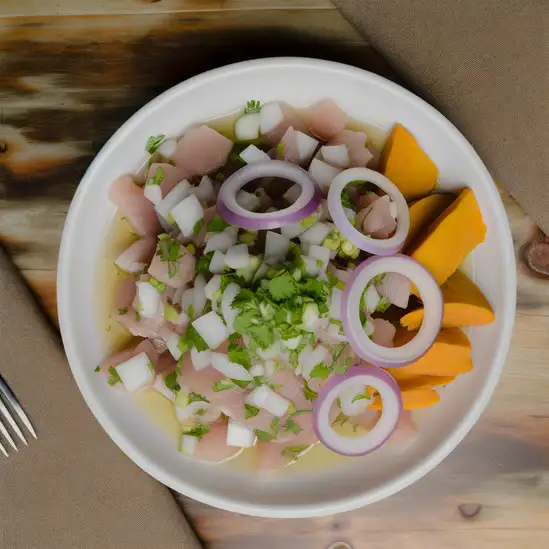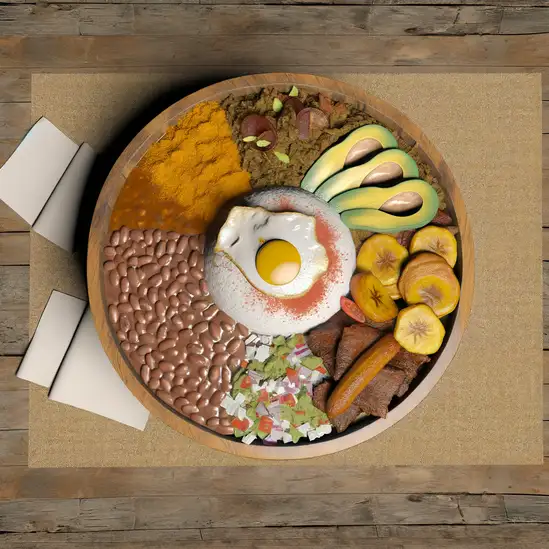


Imagine stepping into a place where the Caribbean sun wraps you in a warm embrace,and the air carries the salty tang of the sea mixed with the sweet scent of tropical fruit. That’s Santa Marta for you—a city that feels alive with a laid-back rhythm,where the past and present dance together effortlessly. Walking through its colorful streets,you’ll hear the lively chatter of locals,the distant strum of a guitar,and the occasional call of street vendors selling fresh arepas or juicy mangoes. It’s a place where time slows down just enough for you to savor every moment. Santa Marta’s charm lies in its blend of natural beauty and rich culture. The city sits at the edge of the Sierra Nevada mountains,so you can watch the lush green peaks rise dramatically against the bright blue sky. The nearby beaches invite you to dip your toes in warm,crystal-clear waters or lounge under swaying palms while the ocean breeze cools your skin. But beyond the scenery,it’s the people who make Santa Marta unforgettable—their warmth,their stories,and the vibrant festivals that fill the streets with music and color. If you’re craving a taste of authentic Colombian life,Santa Marta offers it in every bite of freshly caught seafood,every smile exchanged in the plaza,and every sunset that paints the sky in shades of pink and gold. It’s a city that invites you to slow down,breathe deeply,and fall in love with its easygoing spirit.
The information on this page is currently being reviewed by Tripkliq and should be used as a guide only
Eng word: Hello
Eng pronunciation: OH-lah
Local language: Hola
Eng word: Goodbye
Eng pronunciation: ah-DYOS
Local language: Adiós
Eng word: Thank you
Eng pronunciation: GRAH-syahs
Local language: Gracias
Eng word: How much
Eng pronunciation: KWAN-toh KWEH-stah
Local language: ¿Cuánto cuesta?
Eng word: Toilet
Eng pronunciation: BAH-nyoh
Local language: Baño
Eng word: Help me
Eng pronunciation: ah-YOO-dah-meh
Local language: Ayúdame
Eng word: Yes
Eng pronunciation: SEE
Local language: Sí
Eng word: No
Eng pronunciation: NO
Local language: No
Eng word: Excuse me
Eng pronunciation: pehr-DOHN
Local language: Perdón
Santa Marta, founded on July 29,1525, by the Spanish conqueror Rodrigo de Bastidas, is the oldest existing city in Colombia and the second oldest in South America.
Being the oldest city in Colombia, Santa Marta served as a major port and hub during the Spanish colonization of the Americas, playing a pivotal role in the region's history.
This historical hacienda is where Simón Bolívar, a key figure in Latin America's quest for independence from Spain, spent his last days. Today, it serves as a museum, cultural center, and monument to Bolívar's life and legacy.
Dating back to 1766, the Santa Marta Cathedral is one of the oldest cathedrals in Colombia. It is believed to contain the remains of the city's founder, Rodrigo de Bastidas.
Near Santa Marta lies the Tayrona National Natural Park, known for its biodiversity, beautiful beaches, and archaeological sites. It showcases the rich ecological and cultural heritage of the region.
Before the Spanish arrival, the area around Santa Marta was inhabited by the Tairona indigenous people, renowned for their intricate goldsmithing and sophisticated urban planning.
In colonial times, Santa Marta emerged as a crucial port for the shipment of gold and other treasures from the New World back to Spain, significantly influencing the city's growth and development.
Discovered in 1972, La Ciudad Perdida, or The Lost City, believed to have been founded by the Tairona people around 800 AD, is an important archaeological site near Santa Marta, revealing the sophisticated practices of ancient civilizations.
This aquarium and museum highlight, the marine biodiversity of the Caribbean Sea and Colombia, showcasing the commitment of Santa Marta to preserving and educating about marine life.
In Santa Marta, the most common Power Adaptor is Type A, Type B.



Fresh fish or seafood marinated in citrus juices, typically served with onions, cilantro, and sometimes avocado.

A hearty platter featuring rice, beans, ground meat, chicharrón, avocado, plantain, and a fried egg.

A traditional soup made with various meats (like chicken or fish), plantains, yuca, and corn, often enjoyed on special occasions.

Twice-fried green plantains that are crispy on the outside and soft on the inside, often served as a side dish or snack.

A deep-fried cornmeal cake filled with a whole egg, often served with a side of spicy sauce.

Coconut rice cooked with coconut milk, often served with fish or seafood, giving it a rich and tropical flavor.

A comforting soup made with corn, cheese, and sometimes meat, popular in the coastal regions of Colombia.
Cartagena de Indias feels like stepping into a vibrant,sun-soaked painting where every corner bursts with color and life. The moment you wander through its cobblestone streets,you’re wrapped in the warm embrace of colonial charm mixed with Caribbean energy. Brightly painted balconies overflow with bougainvillea,and the salty breeze carries the distant rhythm of cumbia and salsa,inviting you to move with the city’s heartbeat. It’s a place where history isn’t just in museums—it’s alive in the laughter spilling from open-air cafes and the clinking of glasses filled with tangy,refreshing aguardiente.
As you stroll along the ancient city walls,the scent of grilled seafood mingles with tropical fruit from street vendors,tempting your taste buds to dive into fresh ceviche or a juicy mango. The sun sets in a blaze of orange and pink over the bay,and the city lights flicker on,casting a golden glow that makes every evening feel magical. Locals greet you with genuine warmth,eager to share stories about Cartagena’s rich past and vibrant present.
What makes Cartagena truly unforgettable is its blend of old-world romance and lively modern spirit. From the bustling plazas where artists display their work to the quiet corners where you can sip a cold cocktail and watch the world go by,the city invites you to slow down and savor every moment. It’s a place that stays with you long after you leave,whispering promises of return.
If you ever find yourself craving a place where energy hums in the air and every street corner bursts with color,Barranquilla is that kind of city. It’s like stepping into a lively painting where the rhythm of cumbia and salsa pulses through the warm Caribbean breeze. The vibe here is unapologetically joyful—people laugh loudly,dance freely,and welcome you with open arms,making you feel like you’ve stumbled into a big,vibrant family gathering.
Walking through Barranquilla,your senses come alive. You’ll catch the scent of fresh arepas sizzling on street grills,mingling with the salty tang of the nearby Magdalena River. Bright murals splash across walls,telling stories of the city’s rich Afro-Caribbean heritage and its famous Carnival,which is nothing short of a spectacular explosion of costumes,music,and dance. The chatter of vendors,the clinking of glasses filled with chilled aguardiente,and the distant beat of drums create a soundtrack that’s impossible to ignore.
What makes Barranquilla truly special is its spirit of celebration and resilience. It’s a city that wears its history proudly but looks forward with a contagious optimism. Whether you’re wandering through the bustling Mercado de Bazurto or catching a sunset over the river,you’ll feel the heartbeat of a place that’s alive,warm,and endlessly inviting. Trust me,once you’ve experienced Barranquilla,its vibrant soul stays with you long after you leave.
A Caribbean island city renowned for its turquoise waters,white sandy beaches,and excellent snorkeling and diving opportunities,including the famous 'Sea of Seven Colors.'
ExploreIf you ever find yourself dreaming of a place where the energy feels alive but never overwhelming,Medellín is that rare city that wraps you in a warm,vibrant hug the moment you arrive. Nestled in a lush valley surrounded by emerald mountains,the air carries a fresh,earthy scent mixed with the sweet aroma of blooming flowers and the distant hum of salsa music drifting from open windows. Walking through its neighborhoods,you’ll notice how the city pulses with life—colorful street art splashes across walls,and locals chat animatedly over cups of rich,dark coffee that tastes like a little piece of heaven.
What really makes Medellín special is its spirit of transformation and resilience. The people here are incredibly welcoming,always ready with a smile or a story about their city’s journey from its past to the vibrant cultural hub it is today. You can feel this optimism in the lively plazas where artists perform,in the bustling markets filled with fresh tropical fruits,and in the innovative cable cars that whisk you up the hills,offering breathtaking views of the sprawling city below.
Don’t miss the chance to savor bandeja paisa,a hearty local dish that’s as bold and comforting as Medellín itself. Whether you’re wandering through the trendy El Poblado district or exploring the historic charm of Laureles,the city invites you to slow down,soak in its rhythms,and discover a place that’s as warm and dynamic as the people who call it home.
The capital city of Colombia,Bogotá is a cultural and historical hub with world-class museums,vibrant neighborhoods,and a thriving culinary scene.
ExploreA short international trip from Santa Marta,Panama City is famous for the Panama Canal,its modern skyline,and nearby islands like the San Blas Archipelago,offering a mix of urban and tropical experiences.
ExploreScammers install skimming devices on ATMs to steal card information, targeting tourists withdrawing cash in busy or poorly monitored areas.
Unlicensed masseuses on the beach may offer massages and then demand exorbitant fees after the service, often much higher than initially implied.
Tourists may be given counterfeit bills or shortchanged when exchanging money at unofficial exchange points or with street vendors.
Scammers approach tourists asking for donations to fake charities, often using emotional stories or fake documents to appear legitimate.
Scammers impersonate police officers and accuse tourists of minor infractions, demanding on-the-spot fines or inspecting wallets to steal money.
Scammers pose as tour guides and offer overpriced or fake tours, often taking payment upfront and disappearing or providing subpar experiences.
Some restaurants or bars may inflate prices for tourists, especially if menus are not clearly displayed or if tourists are unaware of local pricing norms.
Some taxi drivers may overcharge tourists by not using the meter or quoting inflated prices, especially for airport transfers or popular tourist destinations.
Pickpockets target tourists in crowded areas like markets, beaches, or public transportation, often using distractions to steal wallets, phones, or other valuables.
Street vendors may charge tourists significantly higher prices for souvenirs, food, or drinks, especially if the tourist appears unfamiliar with local prices.
The use, possession, and trafficking of illegal drugs are strictly prohibited in Santa Marta, as in the rest of Colombia. The country has stringent laws against drug-related activities, and violations can result in severe penalties, including imprisonment. Tourists should avoid any involvement with illegal drugs to ensure their safety and compliance with local laws.
In Santa Marta, Colombia, smoking is regulated by national laws that prohibit smoking in enclosed public spaces, including restaurants, bars, and public transportation. There are designated smoking areas in some public places, but it is important to look for signs indicating where smoking is allowed. Smoking is also prohibited in certain outdoor areas, such as near schools and hospitals.
Vaping in Santa Marta is subject to similar regulations as smoking. Vaping is not allowed in enclosed public spaces and public transportation. Tourists should look for designated vaping areas and be mindful of local regulations to avoid fines or penalties.
What are other people saying about Santa Marta?
Recent Social posts about Santa Marta
There is nothing to show you for now.